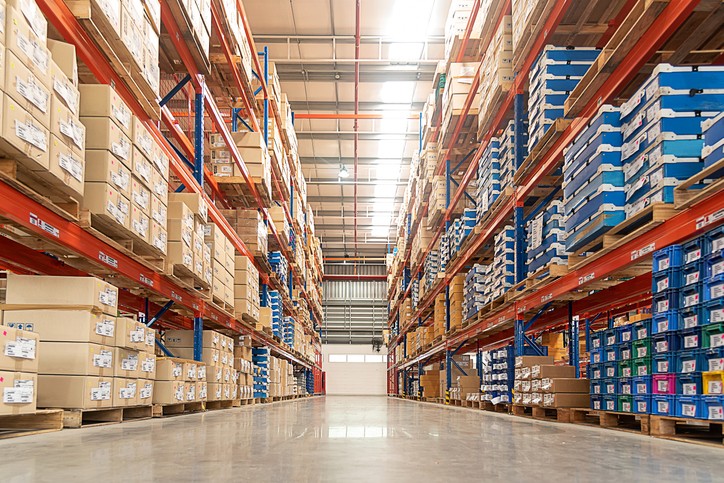In today’s fast-paced manufacturing environment, efficiency, accuracy, and adaptability are no longer optional — they’re critical to success. As global supply chains expand and customer expectations increase, the need for smarter, tech-driven solutions becomes more apparent. One such solution revolutionizing inventory management is digital warehousing.
This blog explores how digital warehousing, powered by IoT (Internet of Things) and ERP (Enterprise Resource Planning) systems, is transforming warehouse operations, reducing costs, and enhancing operational visibility for manufacturers.
What is Digital Warehousing?
Digital warehousing refers to the integration of modern technologies—such as IoT sensors, automation systems, cloud-based software, and ERP platforms—into traditional warehouse operations. It eliminates manual data entry, reduces human error, and offers real-time control over every aspect of inventory management.
Key features of digital warehousing
Real-time inventory tracking
Automated stock management and replenishment
Integration with manufacturing, sales, and procurement modules via ERP
Advanced analytics for demand forecasting and space optimization
The Role of IoT in Modern Warehousing
IoT brings intelligence and automation to warehouse operations by connecting physical objects—such as pallets, bins, shelves, and equipment—to the internet. These devices generate real-time data that can be used for tracking, monitoring, and decision-making.
Real-time inventory tracking
IoT-enabled RFID tags and sensors automatically record product movements throughout the warehouse. This data eliminates stock mismatches and provides up-to-the-minute visibility into inventory levels.
Environmental condition monitoring
IoT devices can monitor conditions such as temperature, humidity, or air quality, which is particularly important in industries like pharmaceuticals, food processing, and chemicals.
Equipment usage and maintenance
Connected machinery can alert warehouse teams of performance issues or maintenance requirements. This reduces unexpected breakdowns and optimizes equipment uptime.
How ERP Enhances IoT in Digital Warehousing
While IoT captures data from the physical environment, ERP systems serve as the central hub for analyzing and acting on that data. A modern ERP solution like Microsoft Dynamics 365 Business Central integrates warehouse data with other business functions.
Unified data for decision-making
ERP systems consolidate warehouse data into a centralized dashboard, offering insights across finance, procurement, production, and sales. This ensures better decision-making based on accurate, real-time information.
Automated stock replenishment
When integrated with IoT data, ERP platforms can automatically trigger reorder points, manage safety stock levels, and align purchase orders with demand forecasts.
Forecasting and planning
ERP systems can analyze historical trends and current demand patterns to generate accurate forecasts. These insights help manufacturers adjust production schedules and minimize inventory holding costs.
Benefits of Digital Warehousing for Manufacturers
Implementing a digital warehousing solution offers both strategic and operational advantages. Here’s how manufacturers benefit:
Enhanced inventory accuracy
Digital warehousing significantly reduces errors caused by manual entry or physical stock counts. IoT ensures real-time tracking, while ERP ensures system-wide accuracy.
Cost savings and efficiency
Automation reduces labor costs and eliminates excess inventory holding. Better space utilization, optimized workflows, and predictive maintenance all contribute to long-term savings.
Faster and more accurate order fulfillment
With real-time inventory data and streamlined operations, picking, packing, and shipping processes become faster and more accurate, improving customer satisfaction.
Seamless supply chain visibility
Digital warehousing enables end-to-end visibility across the supply chain. Manufacturers can track inbound and outbound shipments, monitor supplier performance, and make informed procurement decisions.
Real-World Applications of Digital Warehousing
Automotive and industrial parts manufacturing
With thousands of SKUs and high-volume turnover, IoT devices ensure inventory accuracy and ERP integration supports just-in-time (JIT) production strategies.
Food and beverage industries
Real-time temperature and humidity sensors ensure compliance with safety regulations. ERP integration supports batch tracking, expiration management, and quality control.
Pharmaceuticals
Stringent traceability and compliance standards are met through digital warehousing solutions that integrate with serialization, regulatory reporting, and automated documentation.
Overcoming the Challenges of Traditional Warehousing
Many manufacturers still rely on manual processes or siloed systems. This creates bottlenecks and blind spots in operations.
Common challenges include:
Inaccurate inventory counts
Delayed order processing
Limited visibility into warehouse operations
Inability to scale or adapt to market changes
Digital warehousing directly addresses these issues by digitizing workflows, improving data accuracy, and enabling real-time tracking and analytics.
Choosing the Right ERP for Digital Warehousing
Not all ERP systems are built with modern warehouse integration in mind. Manufacturers should look for:
Native IoT integration or compatibility
Real-time inventory management features
Scalability across multi-location warehouses
Cloud deployment for remote access and updates
Customizable reporting and dashboards
Microsoft Dynamics 365 Business Central, for example, provides full warehouse management capabilities with seamless IoT and cloud integration, making it an ideal choice for small to mid-sized manufacturers looking to scale.
Conclusion: Why Digital Warehousing Is the Future
Manufacturing leaders are embracing digital transformation to remain competitive, and digital warehousing is a critical part of this journey. By integrating IoT and ERP, manufacturers can automate inventory processes, reduce costs, increase visibility, and make faster, data-driven decisions.
In an industry where delays, inefficiencies, and inaccuracies can be costly, investing in a digital warehousing strategy isn’t just forward-thinking—it’s essential.
Looking to Digitize Your Warehouse?
Whether you’re operating a single facility or a multi-location supply chain, adopting a modern ERP integrated with IoT technology can help you unlock efficiency, visibility, and long-term growth.







